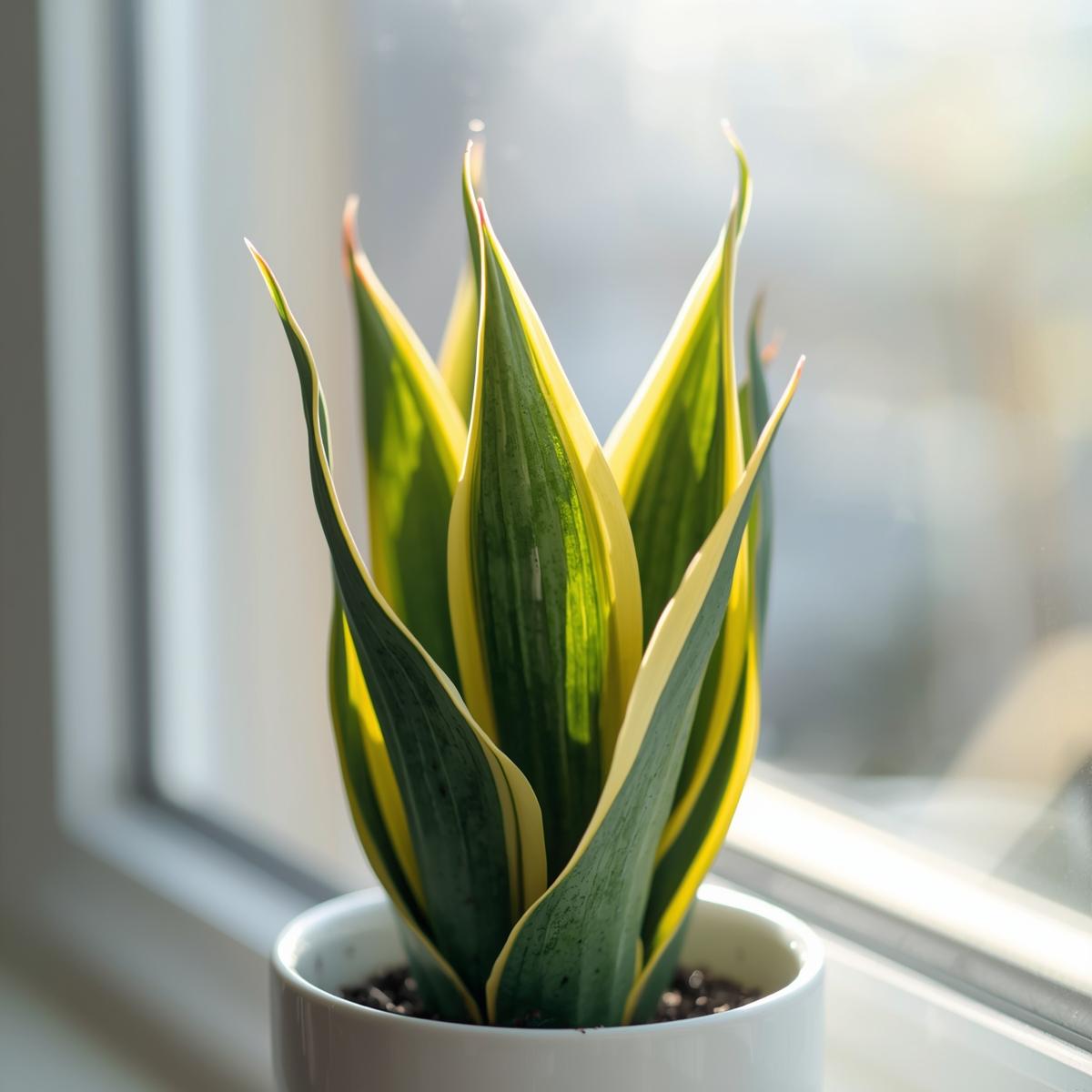Discover expert secrets to keep your snake plant thriving year-round — even if you forget to water it!The snake plant (also known as Sansevieria or Dracaena trifasciata) is one of the most popular indoor plants in the United States, United Kingdom, and Canada — and for good reason. It’s bold, air-purifying, and incredibly easy to maintain. Whether you’re a busy professional or a new plant parent, learning how to care for a snake plant is your gateway to effortless greenery.In this detailed guide, we’ll boost your snake plant care game with simple, science-backed tips and clever hacks — perfect for keeping your space fresh and your plant happy. 🌱🌟 Introduction: Why Everyone Loves the Snake PlantThe snake plant is a low-maintenance, sculptural beauty that fits perfectly in modern homes, offices, or cozy corners. Its sleek, sword-like leaves come in shades of green, gold, and gray — adding instant sophistication to any room.But what truly sets it apart is its resilience. Snake plants can tolerate low light, irregular watering, and even neglect. NASA’s Clean Air Study even lists them among the top air-purifying plants, filtering toxins like formaldehyde and benzene from the air.So, if you’re looking for a nearly indestructible houseplant, this is your green soulmate! 🌿🌞 H2: Light Requirements — Finding the Perfect SpotSnake plants are champions of adaptability. They can survive in low light, but they truly thrive in bright, indirect sunlight.✅ Best Light Conditions:Bright, indirect light — near a window with filtered sunlight.Partial shade — great for bedrooms, bathrooms, or offices.Avoid direct sun — it can scorch the leaves over time.🌤️ Pro Tip: Rotate your snake plant every few weeks to promote even growth and prevent leaning toward the light.💧 H2: Watering — The Golden Rule: “Less Is More”The #1 cause of snake plant problems? Overwatering. These plants are native to arid regions of Africa, so they prefer dry soil between waterings.✅ How to Water a Snake Plant:Check the top 2–3 inches of soil — only water if it’s completely dry.Water deeply until it drains out the bottom.Empty any excess water from saucers to prevent root rot.🌦️ Seasonal Watering Guide:Spring & Summer: Every 2–3 weeks (depending on humidity).Fall & Winter: Once a month or less — snake plants go dormant and need less moisture.💧 Hack: Use a moisture meter to avoid overwatering — or simply stick your finger into the soil to test dryness!🌿 H2: Soil and Potting — Get the Right MixSnake plants hate “wet feet.” That means your soil needs to drain fast.✅ Best Soil Mix:1 part cactus or succulent mix1 part perlite or pumice (for drainage)Optional: Add a little coarse sand for extra airflow🪴 Pot Choice:Choose a terracotta or clay pot with drainage holes — they allow moisture to evaporate and prevent soggy soil.🌱 Hack: Repot every 2–3 years or when roots start circling the pot. Snake plants like being slightly root-bound!🌡️ H2: Temperature and HumiditySnake plants are tropical by nature but surprisingly tough.Ideal temperature: 70–90°F (21–32°C)Minimum temperature: 50°F (10°C)Humidity: Average household humidity is perfect — no need for misting!Avoid placing your snake plant near drafty windows, radiators, or air conditioners, as sudden temperature changes can stress it.🌬️ Pro Tip: In colder climates like Canada or Northern U.S., keep snake plants away from cold glass during winter.🌼 H2: Fertilizing for GrowthSnake plants don’t need much feeding — they’re slow growers.✅ Fertilizing Tips:Use a balanced houseplant fertilizer (10-10-10 or 20-20-20).Feed once every 2–3 months in spring and summer.Skip fertilizing in fall and winter when growth slows down.🌿 Hack: Dilute fertilizer to half-strength to prevent root burn.✂️ H2: Pruning and Propagation🪓 Pruning:Prune damaged or yellow leaves at the soil line using clean scissors.This keeps the plant looking sharp and healthy.🌱 Propagation:You can easily grow new snake plants from:Leaf cuttings:Cut a healthy leaf into 3–4-inch sections.Let them dry for 1–2 days to form calluses.Plant the cuttings in well-draining soil and water sparingly.Division:Gently separate baby shoots (pups) from the parent plant.Replant each pup in its own pot.🌿 Hack: For faster growth, propagate in water first, then transfer to soil once roots form.🐛 H2: Common Problems (and How to Fix Them)Even though snake plants are hardy, they can still face a few issues:🚫 Yellow or Mushy Leaves:Cause: Overwatering or poor drainage.Fix: Let soil dry completely and repot in fresh mix if roots are soggy.🚫 Brown Tips:Cause: Low humidity or harsh tap water.Fix: Use filtered or distilled water, and trim off brown edges.🚫 Wrinkled or Drooping Leaves:Cause: Underwatering or extreme cold.Fix: Water thoroughly and move to a warmer location.🌿 Hack: Wipe leaves occasionally with a damp cloth — it helps them “breathe” better and stay glossy.🌻 H2: Snake Plant Benefits — Beyond BeautySnake plants aren’t just easy to care for — they also bring powerful benefits:Air purification: Removes formaldehyde, xylene, and toluene.Oxygen boost: Releases oxygen even at night (unlike most plants!).Low maintenance: Perfect for busy people and beginners.Stylish décor: Complements modern, minimalist, and boho interiors alike.🌙 Fun fact: Snake plants are one of the few plants that clean air while you sleep — making them ideal bedroom companions!🌸 Conclusion: Boost Your Snake Plant Care Routine Today!Taking care of a snake plant doesn’t have to be complicated — it’s all about light balance, minimal watering, and patience. With these simple hacks and expert tips, you’ll keep your plant thriving for years.So go ahead — boost your how to care for snake plant skills and watch your green companion flourish! Whether you’re decorating your home office or brightening up a cozy corner, the snake plant is your go-to for beauty, air purification, and effortless charm. 🌿✨SEO Keywords: how to care for snake plant, snake plant care guide, sansevieria tips, indoor plant care hacks, easy houseplants, best low maintenance plants, boost your snake plant growth, snake plant watering tips.

